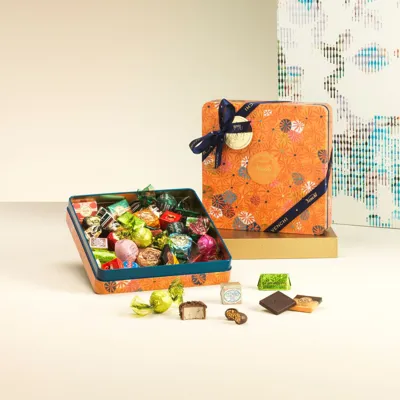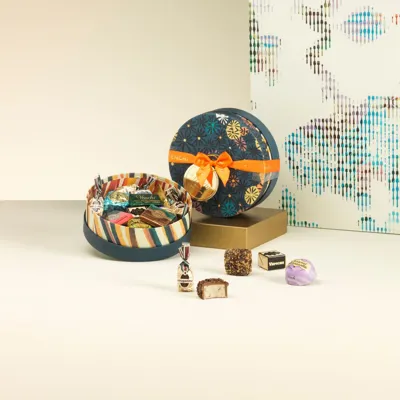Venchi Chocolate Best Sellers
What is chocolate's flavour profile?
Chocolate is a unique ingredient that captivates both the imagination and the taste buds. Its flavours are rich and varied, with cocoa being the main note in both milk and dark chocolate. However, there’s much more to discover. We’ve simplified the most common flavour notes into a few key categories:
Floral: notes of geranium, jasmine or other florals
Herbal: notes of rosemary or other herbs
Spicy: notes of pepper, cinnamon, or other spices
Nutty: notes of walnut, almond, or other nuts
Fruity: notes of citrus, berry, tropical or other fruits
Earthy: notes of olives, wood, or mushrooms
Dark Sweet: plum, wine, or brown sugars
How to appreciate chocolate notes
Tasting chocolate is an art that involves focus and appreciation, allowing the full range of its flavours to unfold on the palate. The quality of the chocolate plays a significant role—higher quality chocolates reveal more intricate and complex flavour profiles. Below, we’ve outlined the key elements to pay attention to when savouring chocolate.
Taste: take a small bite and let the chocolate melt slowly in your mouth. Focus on the initial flavour that comes through—is it sweet, bitter, fruity, or nutty?
Secondary notes: gently rub the chocolate between your fingers to release its aroma before tasting. Then, notice how the flavours develop and evolve as the chocolate lingers—do new notes emerge, such as floral, spicy, or earthy tones?
Texture: how does the chocolate’s texture taste in the mouth? Is it smooth, creamy, coarse, or chewy?
Each type of chocolate has its own distinct flavour profile. With white chocolate, focus on its smooth, creamy texture and delicate hints of butter or vanilla. Milk chocolate shares a similar profile but often includes deeper caramel or cocoa undertones. Dark chocolate, however, presents a more complex blend of sweetness, bitterness, and a touch of sourness.
How to taste chocolate like a connoisseur
Chocolate connoisseurs approach the art of tasting carefully, using all their senses—sight, smell, taste, touch, and even sound—to fully appreciate each bite. Here are some key tips to help you taste chocolate like an expert:
No right or wrong: Chocolate tasting is a personal experience, and there are no right or wrong opinions. Instead, trust your own senses and enjoy the journey.
Choose a clean, well-lit space: To fully immerse yourself in the experience, find a quiet, distraction-free environment where you can focus entirely on the chocolate.
Taste at room temperature: Let your chocolate come to room temperature before tasting it, as this allows the flavours to unfold more naturally and the chocolate to melt smoothly in your mouth.
Cleanse your palate: Between tastings, cleanse your palate with warm water or a neutral cracker to reset your taste buds and enhance your chocolate experience.
Experiment with Venchi chocolates: a flavour journey
Start your tasting journey with Venchi's chocolate tasting kit that combines the finest chocolate with bold, innovative flavour combinations, sure to spark plenty of opinions. Follow these simple steps to maximize the chocolate’s flavours:
Look: what does the chocolate look like? What colour is it? Is it glossy or matte?
Touch: rub a small piece of the chocolate between your fingers. Does it melt easily?
Listen: close your eyes and snap the chocolate. What sound does it make? The easier and louder the snap, the better the quality of the chocolate.
Smell: what are the aromas you can detect? Are they intense or mild?
Taste: allow the chocolate to melt in your mouth. Compare the initial taste to any hints of flavour that emerge a little later.
Enjoy: tasting chocolate is supposed to be a pleasurable experience.





















